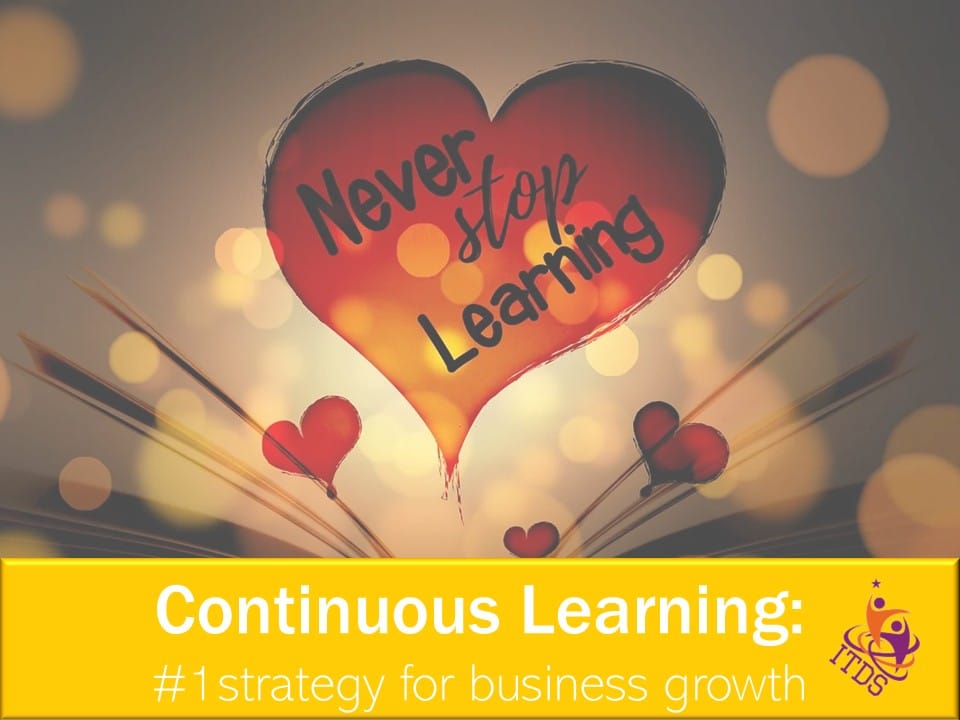Investing In People? How To Avoid Getting Poor Training Results
- Home
- Investing In People? How To Avoid Getting Poor Training Results

I understand your frustration with poor training results…I really do.
You have limited cash flow but you would love to train your staff. At the same time, you’re so afraid because you’ve been seriously burnt by poor training results before.
And I agree with you, training and development for you and your team is the single greatest investment that you can make to grow your business. Therefore, you really must learn how to get the best possible results from your training investment.
But I also know what’s really at the core of the poor results that you get from your training investment.
Let me lay it out for you.
You are the CEO (as Chief Everything Officer) of your business. You have to manage the operations, supervise the staff, keep up to date with what’s happening in your industry and more. So you outsource the one thing that you believe is “outsourceable” – training.
And every time, you’re not happy with the results. And let me guess…you blame the Training Facilitator for your poor training results.
But you can’t blame the Training Facilitator alone. Your poor training results usually start when you don’t know how to go about investing in training and you expect magic from your training provider.
So guess what?
Because I’m so passionate about training and development for small businesses, I’ll show you 8 ways to avoid getting poor training results, when you spend on training. I promise you they will work like magic, if you follow them.
Now let me count them down for you.
8. Avoid the “menu approach” to selecting training
You manage your business from day to day and you’ve been doing it for 10 years. You know your problems and you know that training can fix them. So you don’t need any complex process to decide on training for your staff. What you really want is a list of topics, neatly numbered which you can choose from. Right?
And that’s where your poor training results start.
When you select training programmes in this manner, here’s what happens.
Your employees are usually shovelled into workshops for which they are ill-prepared. They are trained on topics which are only partially relevant, by trainers who have little knowledge of the critical aspects of your business.
You end up being frustrated because you feel as though you have provided training for “hard-headed, ungrateful” employees.
The Training Providers are confused and frustrated because they delivered to your requirements and are now hearing that their programmes were useless.
You could have avoided all this if you had taken a different approach.
You would have been so much better off, if you had allow the facilitator to conduct a training needs analysis on your behalf. What’s more, it does not have to be an overly complicated exercise. But it will introduce the important elements of discipline, focus and cost-efficiency into your training process.
7. Recognise that every performance problem cannot be solved by training
Sometimes, but much too often, I get a request for training that goes something like this:
“Miss Barrow, I need your help fast! I have some disgusting workers that need training as soon as possible!”
“How do you know?” I usually ask…as I roll my eyes to the back of my head.
“It’s the only thing that could save them now!”
It’s unfortunate that you, and even some Training Providers actually believe this. But you can’t solve every employee problem by training.
Some problems need a coaching solution instead of training. Others can be directly linked to your business systems and processes which might need a proper overhaul. And when it’s a case of poor recruiting on your part, no amount of training will solve that for you any time soon.
So make sure you avoid poor training results by taking the simple but powerful step of making sure you do have a training problem before you invest in training. You’ll be glad that you did.
6. Do not use training as a punishment
“Come on Lorna! What are you talking about this time? Training as a punishment? No!”
I say “Yes!”
First you need to understand punishment in this context.
Let’s describe it as a course of action that is taken after some undesired behavior, designed or intended to reduce or eliminate that unwanted behavior.
Now consider the following scenario.
A group of unhappy employees complain to their employer about a number of unsatisfactory working conditions. The seething employer demands to know exactly what they want and in unison, they declare “training!”
They employer contacts the next available training provider and request that they provide “training” not exceeding $X-amount because that is all he’s going to spend on these ungrateful employees.
This “training” is provided without any specific need analysis, usually by the approach describe at #8 in this post.
The results?
The employees are happy for a short time but pretty soon, they realise that nothing has really changed.
When they try to voice their concerns with their boss, they are met with “you said you wanted training and I gave you training. If it’s not what you want then I don’t know how I can help you!”
When you invest in training for this malicious purpose, you are wasting your money, you’re not solving any problems and you’re deliberately begging for poor training results!
5. Make training transfer a critical success factor
Training is transferred, when the knowledge and skills which your employees learnt in the training room, are quickly and easily applied to workplace situations.
If training transfer is not the underpinning and overarching goal of your training, then training becomes an end in itself and the results can only be poor.
I feel so strongly about this that I usually promise my clients that “what is learnt in our classrooms will show up in your workplace.”
So how can you make training transfer happen?
Well, be sure to make it a part of any training needs discussion and get clear indications of what the Facilitator will do to make it happen.
At ITDS, we have devised a number of strategies and tools to ensure that training is transferred and everyone gets the results they agreed. Here is just a sample of our strategies. Feel free to use them as you see fit.
- “Learning Contracts” prior to training. These contract are made between you and your employees. It ensures that your employees are sure why they are being trained and what they are committed to learning. On the other hand, you are required to commit to using the knowledge which the participants will acquire.
- “911” hours built into the proposal/contract. This way, for a limited time after the training, participants can contact us if they realise they didn’t “get” something during the training. This means they are less stressed in the classroom and end up learning more.
- Creative and unique training methods. These are based on sound knowledge of adult learning practices and deep experience of what works. In this way, we powerfully engage participants so that the transfer of learning is high.
4. Check how the training will be delivered
I’m not asking you to demand that you help write the training programme.
What I’m asking you to do is to have a discussion with your Training Provider to guard against the following:
- Illogical arrangement of topics. Your people will learn best when they get the information in a way that allows them to build on what they already know. When the topics are arranged by the availability of the presenters (or so it seems!), the only tangible output is frustrated trainees.
- Training methods and material do not reflect the circumstances and culture of your business. This often happens when the Training Provider has bought a license for the training and delivers it straight out the box. The problem is that this content is generic, intended for many markets. Therefore, it has to be modified to suit your special circumstances or it will have little value for your purposes.
- Long hours and loads of content. Most facilitators know that a packed programme impresses a client, so they design just that. But let me warn you, long hours and loads of content is a specific remedy for tired, bored and frustrated participants. You need a programme with key topics and enough time to allow your employees to practice the new skills. This also increases the speed and ease at which the training will be transferred.
When you hold the necessary discussion about how the training will be delivered, you’re well on the way to avoiding poor training results from your investment.
3. Measure the right things to avoid poor training results
I know…I know…you’ve heard so much about measure this and measure that in business, you’re very confused.
So let me help you out here.
For your business, first of all you need to measure how and to what extent, the training addresses what you need to do to continuously improve results, now and in the future.
In order to do this, you need some means of tracking the the employee’s “training story”.
What I mean is, you have to establish a process that clearly tracks what people learnt in the classroom, how they applied that learning on the job and what effect this had on your business results. The “story” must also include your role in facilitating the transfer of knowledge.
You don’t have to make this a difficult or convoluted process but you need to collect accurate information and make sound judgements, based on that information.
You also need to measure the return on your training investment (ROTI).
Admittedly, this is not as easy as the measurement above. At ITDS, we have a model for measuring the ROTI that quantifies the cost of training, including lost productivity when attending training. It also quantifies the monetary benefits received from training, including new revenue and productivity increase.
When you adopt some method of measuring if you’re getting value for your training dollars, you become more willing to spend on training and poor training results are a thing of the past.
2. Establish a training & development budget
I shouldn’t have to tell you this.
But even when you’re a solopreneur, you should allocate some money to your own development. It is pretty well established that personal and professional development is one of the solutions to skyrocket your business growth.
Then, many of you claim how important “our people are to the business.” But when I check your budgets, on a good day, training represents, at most, 5% of the overall budget.
Furthermore, in a recession or if another area of the operations needs to be enhanced, then the training budget is the one that is chopped in a heartbeat. This is what I call the Last in First out (LIFO) budgetary approach to training.
Your best approach would be to allocate a sum of money for training. And spend it on training! By doing this, you signal to your employees that you are committed to their development. Once you have some money in a training budget from the outset, it raises your own commitment to good outcomes.
1. Choose your training provider very carefully to avoid poor training results
How do you choose an individual or a company to provide training for you?
I want to believe that you do so very carefully but I have my doubts. Here’s why.
Recently I had a meeting with a potential client and before that meeting I was so excited. My initial investigations indicated that the business was ripe for training in several areas. In addition, I saw myself working directly with the owner, coaching him to lead his team like a boss and increase his market share.
But then he immediately began our conversation by telling me that a “rival” Training Provider had already quoted $X and if I could quote him $X-Y he would be so happy.
Really?!
If this is his approach, what do you think would be his results? Let me tell you, I wanted no part of this and I walked away from it without regrets.
What makes me sad is that this is not an isolated incident.
Look, how you choose your Training Provider has a huge impact on the results. Here’s a little checklist of questions to ask a potential training provider to at least help you begin to avoid poor training results. Feel free to use them.
- What results have other clients had from your programs?
- What was your responsibility for getting those results?
- How are your programs different from those offered by other private and tertiary training providers?
- How can you help us choose the right program?
- What kind of materials do you provide?
- How interactive is your course?
- How much experience do you/your instructors have?
- May we talk with the instructor(s) before class?
- How will you help us to get participant buy-in?
Your next steps to avoiding poor training results
Okay…Admit it.
I’ve given you some solid information to increase your confidence to invest in training for your employees.
And why not?
Training and development of yourself and your employees is the single greatest investment that you can make to grow your business.
Before now, you didn’t understand your role in reducing or completely avoiding poor training results, so you blamed the training itself and or the Training Providers.
I understand that but now you have a much better alternative.
Take the information and run with it. Establish a training budget, select a Training Provider, arrange for a training needs analysis, have the relevant conversations but above all, take some action to train our employees. Your business deserves no less.
To your training success…
Video of The Week:
Are you still wondering about starting a new business in 2024? You’re not too late!
In this week’s video, in just about 3.5 minutes, The Young Entrepreneur Forum shares the top 10 trending business ideas in 2024. I could start a business with idea #5…
Watch the video and then check out some great advice on raising money if you want to do so to start that business! Enjoy!
Meet Lorna Barrow

When it comes to helping you grow your small business, develop yourself & your team, Lorna’s got your back!
Follow her on twitter @LornaBarrrow
Join her Facebook Page: Impact Training
Email her at: Lorna@impacttrainingservices.com





